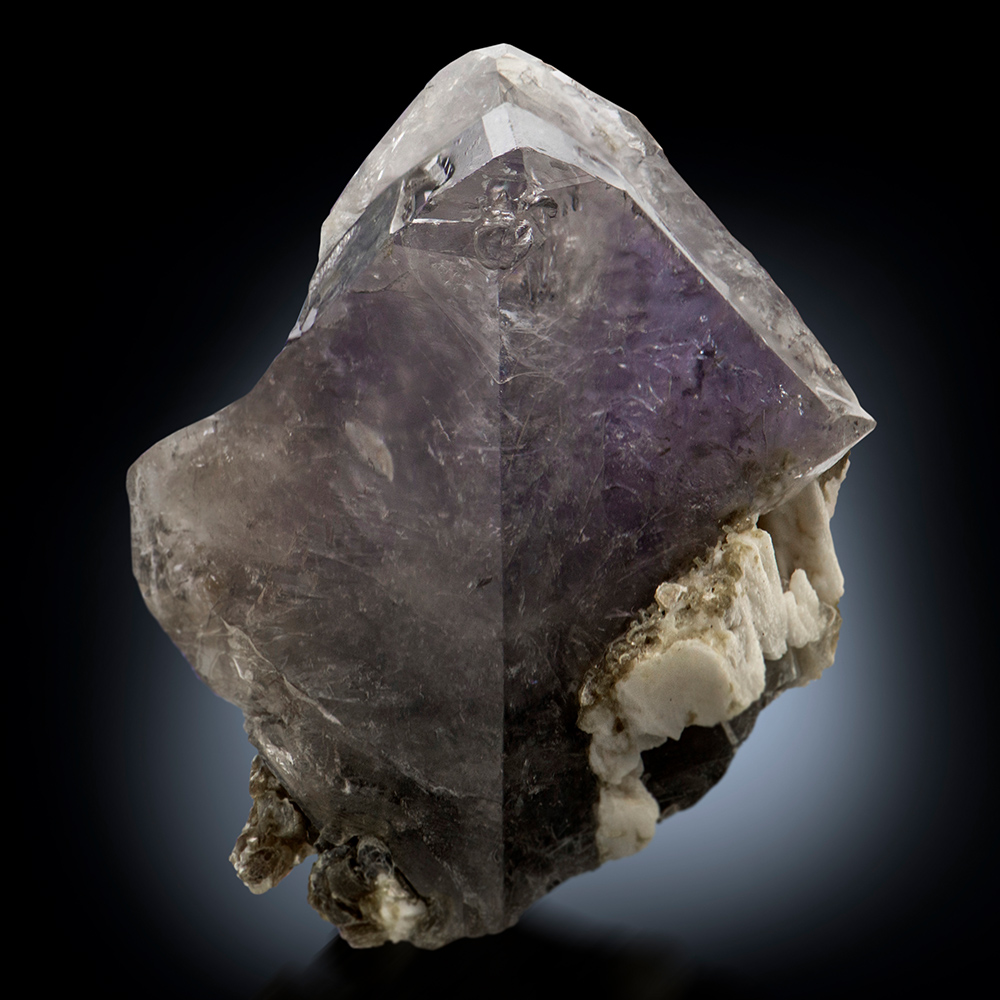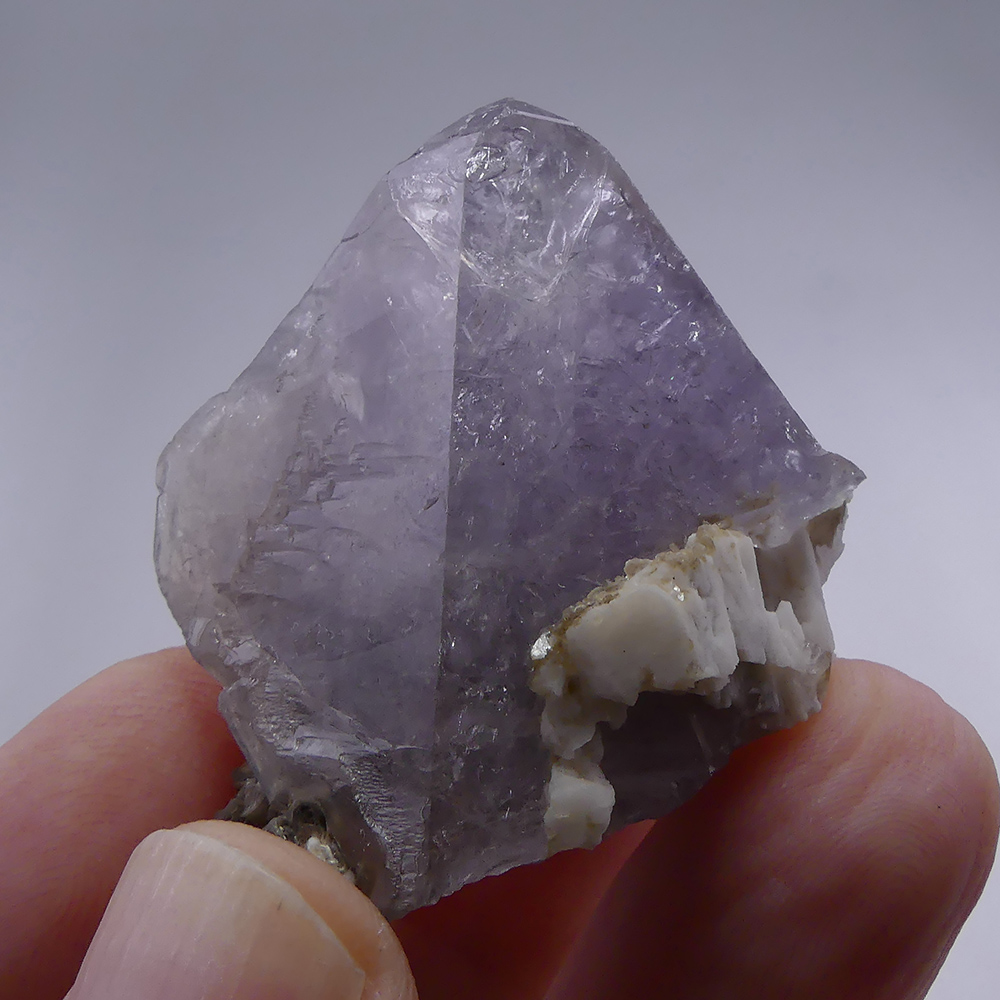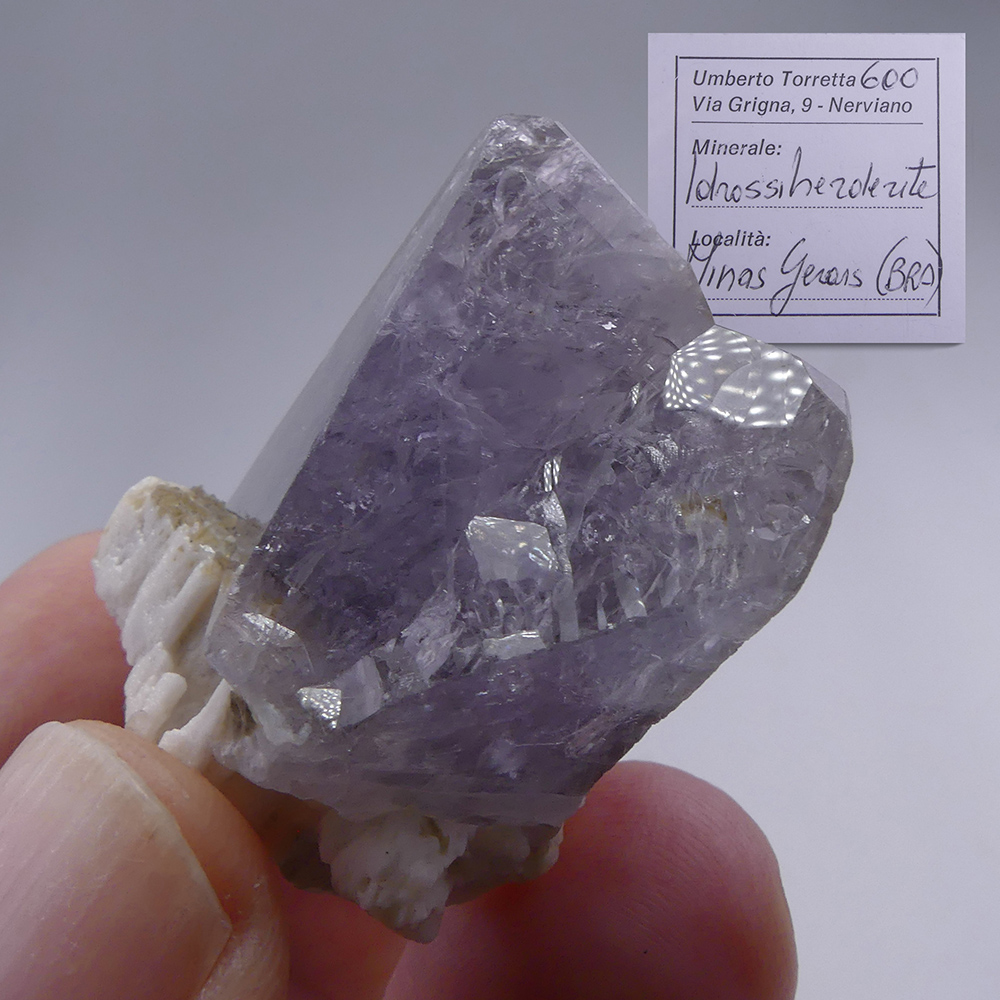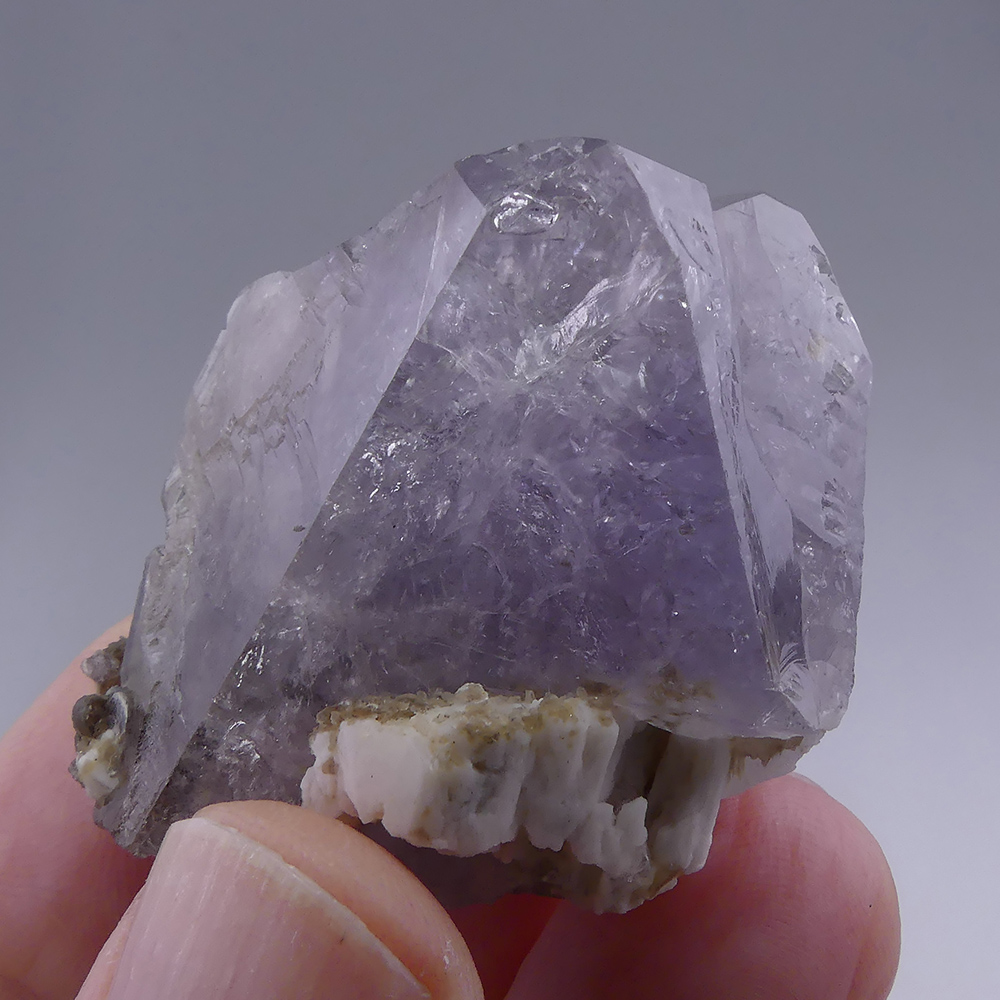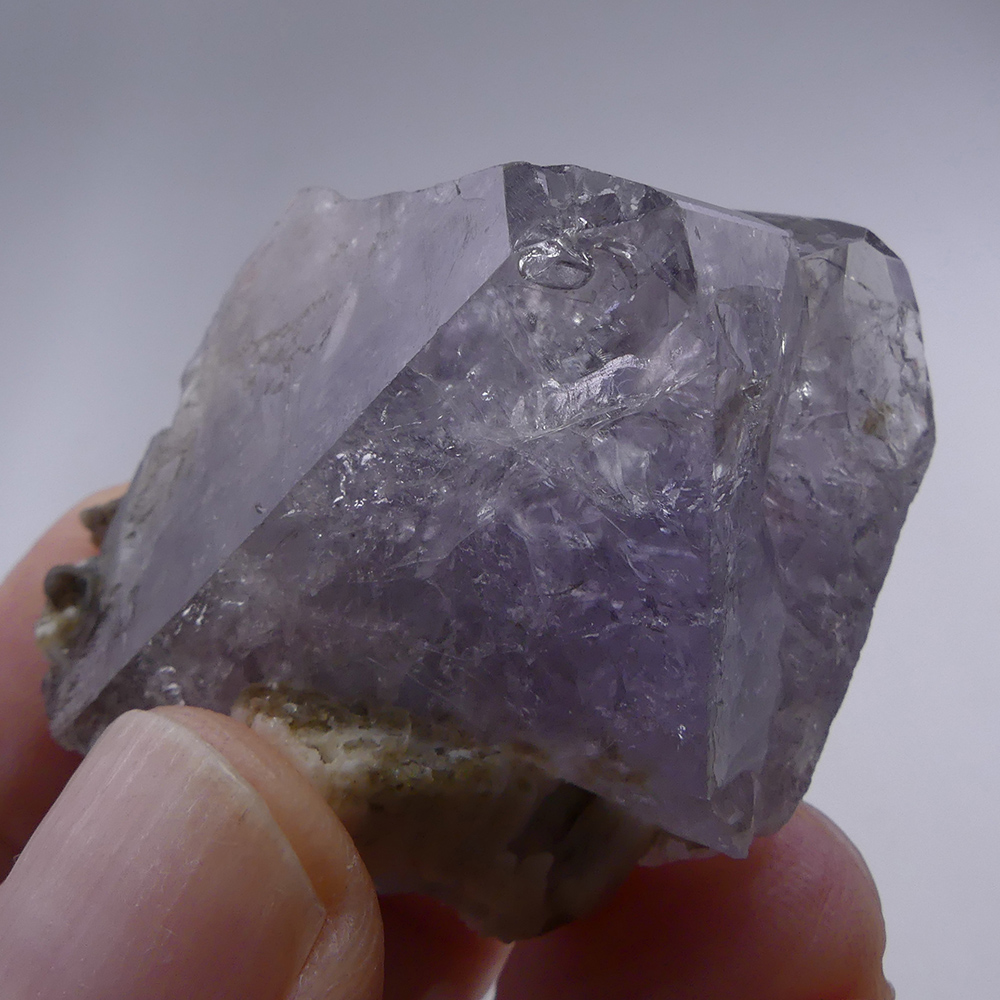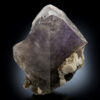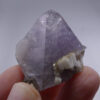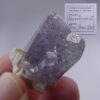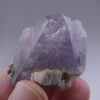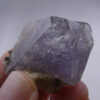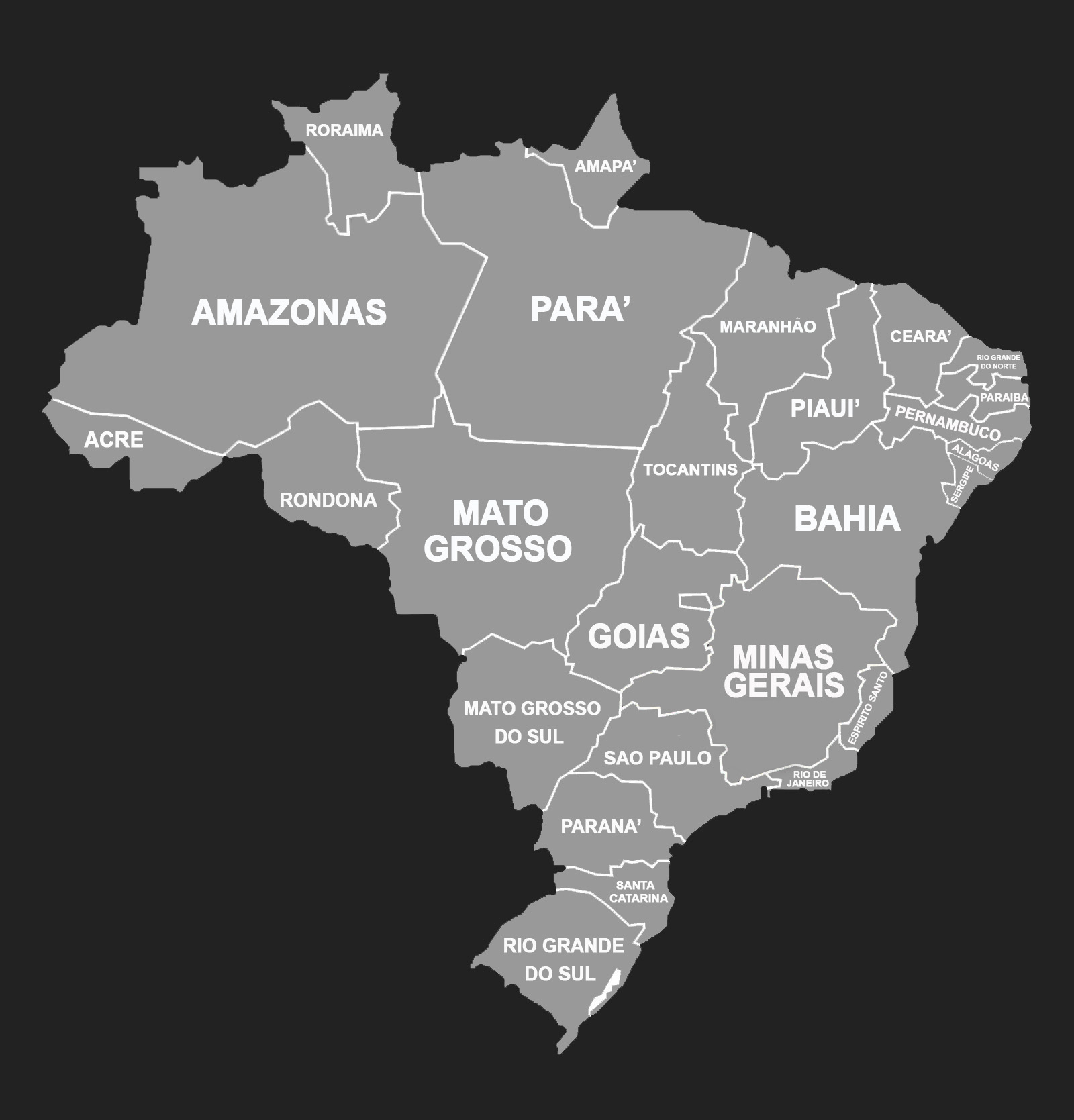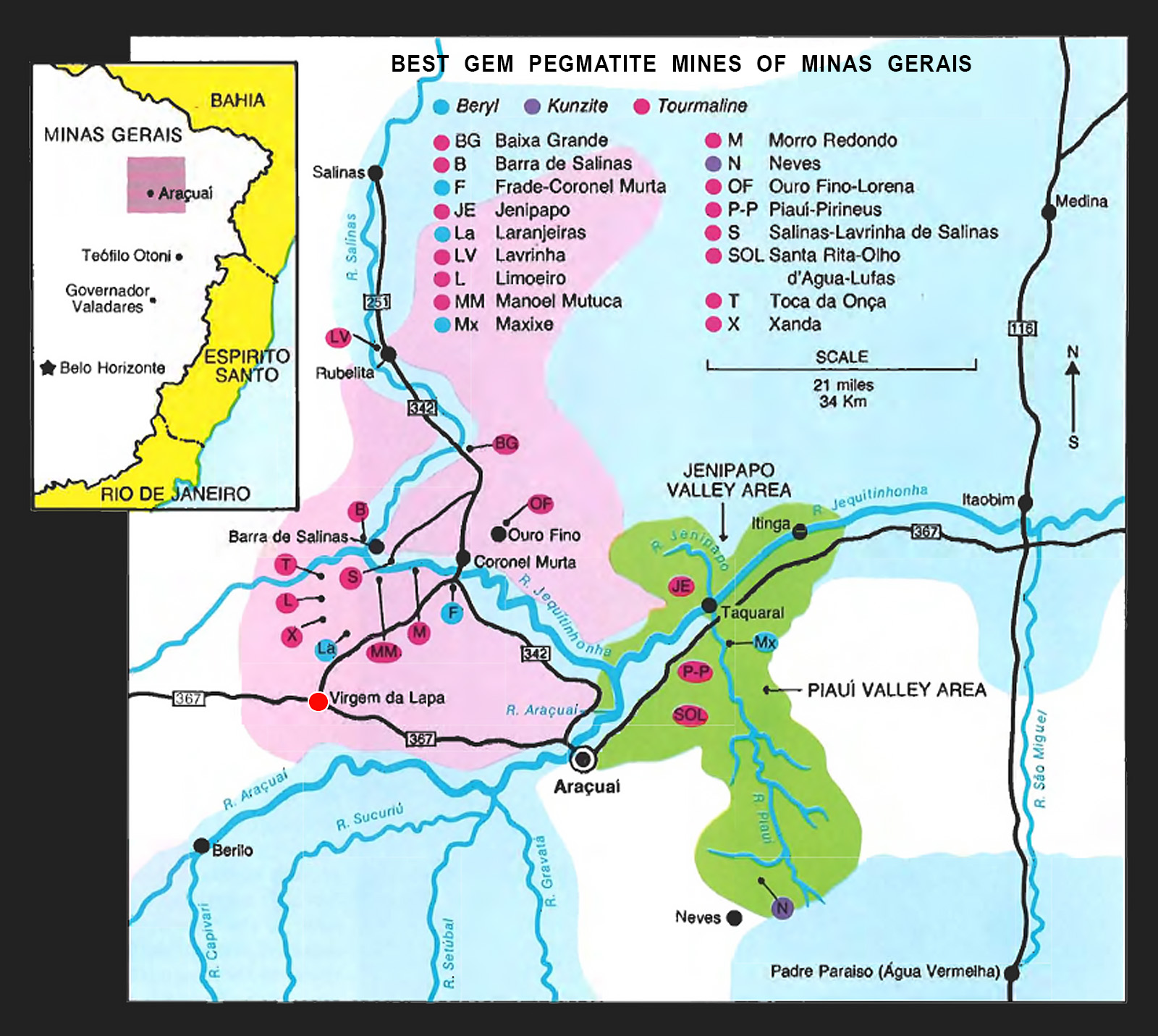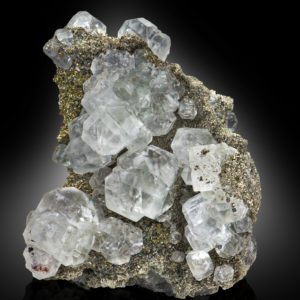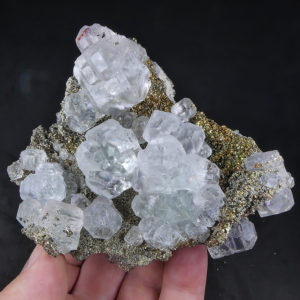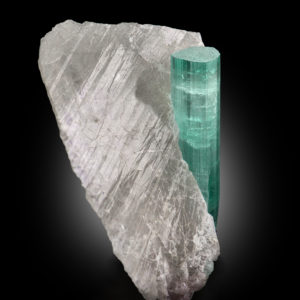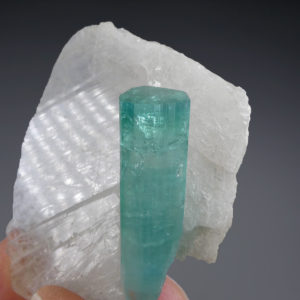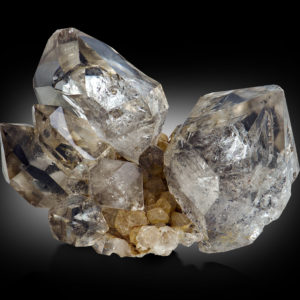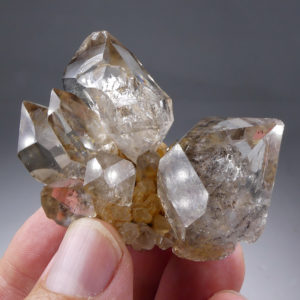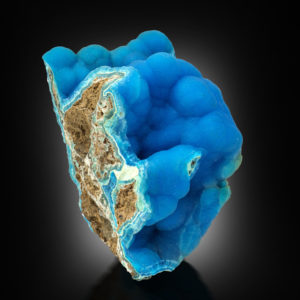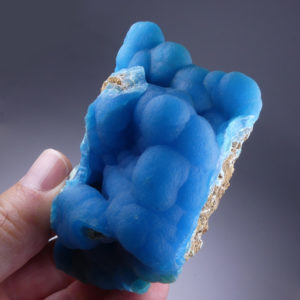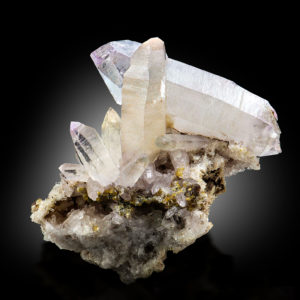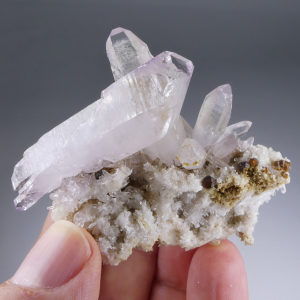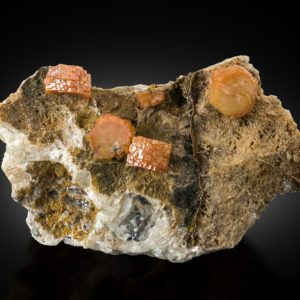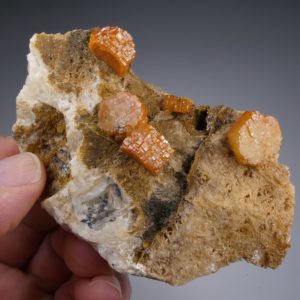HYDROXYLHERDERITE – Brazil – GFS0413
In stock
€ 950,00 +TAX
Hydroxylherderite
Xanda mine, Virgem da Lapa, Minas Gerais, Brazil
4×3,7×3,5 cm.
We offer you a fantastic ex-Umberto Torretta pyramidal crystal of Hydroxylherderite, well-shaped all around, exhibiting excellent vitreous luster and a rare light purple color. This specimen is from Virgem da Lapa, renowned for its rich deposits of a wide variety of minerals, including this species. The generous dimensions and aesthetics of this piece make it highly desirable and representative. The presence of mica and feldspar completes and characterizes the origin of this piece.
Hydroxylherderite is a relatively rare phosphate mineral, typically found in granitic pegmatites, formed during late stage hydrothermal deposition and known for its interesting crystal forms and colors, which range from colorless to shades of gray, brown, pale yellow, greenish, light blue, purple. Hydroxylherderite was first described by Wilhelm Haidinger in 1828 and named in honor of the german mineralogist Sigmund August Wolfgang von Herder (1776-1838) :
The mineral was originally discovered in the Ehrenfriedersdorf mining district in Saxony, Germany. Over the years, it has been found in several notable localities worldwide, including Brazil, USA, and Afghanistan.
Minas Gerais is the country’s storehouse of mineral riches, as indicated by its name, which in Portuguese means “General Mines”. For more info ![]()
Minas Gerais was first explored by Fernão Dias Pais Leme between 1664 and 1677, though he was not the first European to enter the area. The discovery of gold in 1692–95 by bands of adventurers from the São Paulo settlements led to a mad rush for the new mines. Gold was discovered in 1698 and in 1729 diamonds were discovered. Minas Gerais is now widely known for its semiprecious gems, such as aquamarine, amethyst, tourmaline, topaz, morganite, kunzite and it is an important source of industrial diamonds and wonderful quartz crystals. The best-known and most valuable specimens come from the pegmatites in the northwest granitic region of the state. For more info ![]()
The Virgem da Lapa group of mines consists of a series of near-horizontal tabular or lens-shaped bodies of unaltered complex granitic pegmatite. Five mines exploit the pegmatites, which are geologically the most differentiated and heterogeneous gem pegmatites yet discovered in Brazil. While these unaltered pegmatites imposed great difficulties in mining, the yields from pockets containing gem crystals and matrix mineral specimens in their pristine state has more than compensated the miners for their efforts. Since 1974, for example, miners have found superb crystals of green tourmaline, some as long as 33 cm. and weighing as much as 2.4 kg, also crystals of deep blue tourmaline up to 1.2 kg, blue topaz crystals weighing as much as 30 kg, 15 cm. green gem beryl crystals on well crystallized feldspar matrix, as well as numerous other rare minerals and matrices of perfect feldspar and lepidolite crystals. In addition, 7 cm. long purple gem Hydroxylherderite crystals of unequalled size and quality was found; the world’s finest specimens of hydroxlherderite were found in the Xanda Mine, but other excellent crystals were found at the Lavra do Enio (Galileia) and the Golconda mine (Governador Valadares). In recent years, high-quality crystals have emerged from the Skardu district in Baltistan, Northern Areas of Pakistan, as well as from the Darra-i-Pech Pegmatite Field in Nangarhar Province and Paprok in Nuristan Province, Afghanistan. For more info ![]()
In stock
Additional information
| Weight | 0.039 kg |
|---|---|
| Dimensions | 4 × 3.7 × 3.5 cm |
| Country | |
| Location | |
| Species |

